Is The Term “Beauty Sleep” Pure Fiction? Actually, It’s A Real Thing, And You Can Actually Reverse Aging And Improve The Appearance Of Your Skin Simply By Going To Sleep
We’ve all heard the term “beauty sleep” many times. We’re conditioned to thinking that is typically involves applying a creamy like substance or a product made of snail secretions to smooth out wrinkles and eliminate lines and crows feet, but in fact, nature, purely by its own invention, has the magical cure for almost anything, if you choose to take advantage of its power. And healing and improving your skin is only scratching the surface.
The amount of time you invest in sleep can have a profound impact on the appearance, suppleness, tension, moisture content, and thickness of your skin. Want a supple, hydrated, and smooth face, without indentations, frown lines, and weathering? Develop a solid plan about increasing the amount of sleep you get every night. Drink water at bed time, during the night, and rehydrate yourself in the morning with a full liter of water over an hour period.
When we sleep, our immune system and organ systems, including the skin, our largest organ, recharge.During sleep we heal, restore, hydrate, and vaporize toxins from the skin. If you tamper – even in a subtle fashion – with your sleep, your skin is easily marked with swelling, pulling, dryness, tension, wrinkling and irritation, and almost anyone can walk up to you and tell you that you immediately appear unrested. Your skin is the magnifying glass into your body. If sleep is compromised so is the body’s ability to carry essential skin functions.
Most importantly, the kind of mattress we own greatly influences the quality level of sleep we experience, and can mean the difference between deep, dreamy, restorative sleep that improves our skin and allows our body to rehydrate and replenish skin that has been under stress for 18 hours a day. We recommend only a handful of mattresses, carefully selected by our team, that may be able to help you get the “beauty sleep” you deserve. Our selection of mattresses is provided down below.
Sleep and the Skin
Within minutes of falling asleep, your body becomes a full on orchestrated production that involves healing and the treatment of damaged components, and systems come online that heal, regenerate, transform, and repair your skin. During the first three hours of sleep your body will start producing the human growth hormone produced by the pituitary gland. As we age, this hormone is necessary for the maintenance of youthful and radiant skin. Without this hormone release your skin will not have a chance to repair itself from daily damage and can rapidly increase the aging process, often irreversibly.
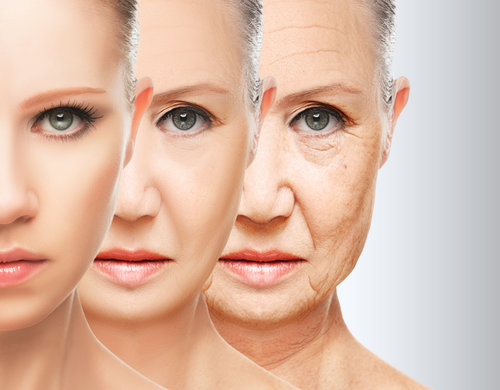
After the first three hours of sleep, for approximately the next two hours, the secretion of the hormone melatonin is steadily increased. Melatonin is responsible for regulating circadian rhythm (sleep/wake patterns) and acts as an antioxidant to help protect the skin from damaging free radicals.
Melatonin bathes your body and your skin during this critical sleep phase. During the last three hours of sleep, or during the active REM sleep stage, levels of cortisol begin to slowly decrease. The skin’s temperature falls to its lowest point allowing muscles to relax and become temporarily paralyzed, giving skin its deepest level of recovery and restoration of the night. This process transforms your skin, especially on the face where thousands of small blood vessels replenish your skin with the healing power of oxygen and moisture.
Five Ways Lack Of Sleep Ravages And Destroys Your Body
If rejuvenating and helping your skin wasn’t enough reason to climb into bed for a a good night’s sleep, here are 5 ways lack of sleep is destroying your skin and wrecking your appearance.
HAIR
There is a direct connection between stress and hair loss. Studies show that sleep deprivation is a ruthless form of stress to the body. Which is basically an indirect way stating that lack of sleep (increase in cortisol and stress levels) can cause premature hair loss.DAMAGED SKIN
When you miss sleep your cortisol levels increase. Cortisol triggers inflammation. Inflammation breaks down the proteins that keep skin radiant, shimmering, and smooth. When you are fatigued, the blood in your body is not saturating tissues due to vasoconstriction, resulting in a lack of oxygen in the blood. Lack of oxygen in the dermis and epidermis causes your skin to appear grey, pigmented, and blotchy, even raw and inflamed.DRY SKIN
Were you aware that during sleep your rate of perspiration increases? While you are sleeping, your body’s is busy restoring tissues and recovers extra moisture. That’s why it is essential to consume large amounts of water prior to and after sleep.This makes sleep a natural moisturizer, smoothing out wrinkles in the skin, all over your body, but especially on your face. If you sacrifice sleep in favor of destroying your skin, it can also affect the moisture it can lower pH of your skin causing it to be more acidic that normal. This imbalance causes your skin dry out and reduce moisture it so desperately needs.EYES Dark circles is a widely known common symptom of poor sleep hygiene. Lack of sleep dilates your blood vessels around your eyes, causing blood to pool in this area. Not getting enough restorative sleep can result in poor water balance that create dark circles and puffy eyes. Also, incredibly, even sleeping on your belly can cause fluids to drain and catch in the trough of your under eye and cause inflammation and puffiness. That’s why the ultimate beauty sleep require sleeping on your back, or on your side.
COLLAGEN PRODUCTION AND AGING SKIN
When you fail to get enough sleep, your body immediately becomes stressed, even after just 36 hours. This level of stress harms the integrity of the collagen in your skin. Collagen is an important ingredient that provides the framework and structure of your skin, making it elastic and flexible. When collagen breaks down, the skin shows more obvious signs of aging by becoming thinner and less firm. When skin is thin its appearance is less smooth and subtle and allows wrinkling to be more prominent. It also clings to connective tissue and bone more readily, often creating a sunken skull and hollow eyes effect on some individuals.
Tips for better sleep for better skin
Missing the occasional few hours here and there is one thing, but a sustained schedule of less than 6-7 hours of sleep each night is highly toxic and devastating to the your body. According to the study, getting four hours of sleep or less for an extended period is equivalent to stripping away eight years of your life, making it almost as toxic as smoking.
We’ve established how important a good night’s sleep is for your skin, and providing the ultimate beauty sleep, no doubt. Your body, and especially your skin- respond dramatically and in a profound way to sleep, and offering even one night of a solid 8 hours can repair some of the damage.
What’s a key element to reducing insomnia and improving sleep patterns, so that you get 7-8 hours of restorative and energizing sleep and bathe your skin in healing compounds, naturally? The right mattress. Having the perfect nest and adopting the best sleep habits for your own biology and your own creature comfort profile is mission critical. That’s why we’ve put together a list of our nine most popular mattresses that we personally recommend.
We call it our best of the best category. Nine mattresses, each unique in its design, the materials used, the quilting and covering, and the feel of each. One of them will likely work for you. Take a look and consider one of these options. Carefully vetted and researched, our editor, Marc Anderson, a bedding industry CEO, mattress designer and engineer for more than 25 years, personally selected these mattresses to provide the comfort, support, natural sleep inductive qualities, and pressure relieving elements you need. Check them out, you deserve a beauty sleep every night, don’t you?
TEN mattresses that help give you the ultimate beauty sleep and protect your skin

For the money, one of my top choices. The Dreamcloud Luxury Hybrid Mattress has a sumptuous cashmere quilted top that hugs you, and a thicker layer of gel infused memory foam beneath. Individually wrapped coils lift you so you don’t get buried in your mattress.
I’ve recommended it to hundreds of consumers. Excellent edge support, minimizes motion transfer. With my link, you’ll get $200 off, a free sheet set, 2 pillows, and a mattress protectory. A queen on sale: $899, free ship, 365 day trial. I’ve compared to retail store brands selling similar models for $3,000 and up.
Mar 20, 2019
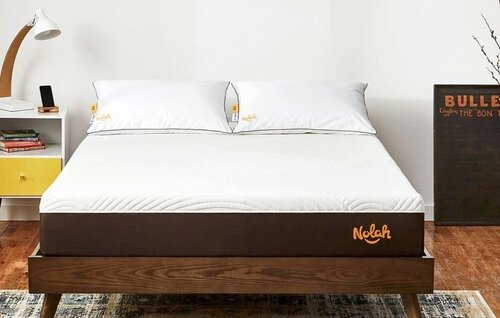
Soft and sumptuous, and built for side and side/back sleepers, The Nolah Original 10” Bed is made with greener, cleaner foams. Their AirFoam™ layer sleeps cool and cozy and is excellent for shoulder pain. Nolah engineers claim this bed is proven to provide 4x better pressure relief on hips, shoulders, and back. Get two free pillows with my link. A solid lifetime warranty, and 120 night no questions asked trial.
Mar 20, 2019
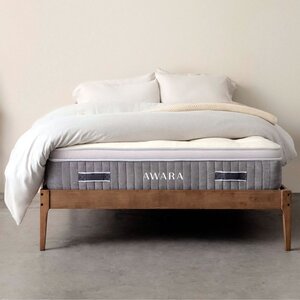
Want a chemical free sleep surface? This outstanding natural latex hybrid bed is loaded with clean, chemical free ingredients.
Up top, there’s a breathable organic quilted top, and beneath you, your body floats on 4” of botanical Dunlop latex (Sri Lankan grown trees, best on the planet). Individually pocketed coils suspend and hover you above the underlying. layer of medium high density foam that won’t break down.
Free sheet set, 2 free latex pillows, and mattress protector included. Delivered with 365 day no questions asked trial , lifetime warranty. My #1 Hybrid Pure Latex/Coil Choice.
Jan 11, 2020
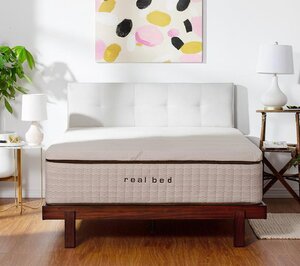
I’d call it an outstanding natural mattress that delivers supernatural comfort and levitating support. An organic outer quilted cover, a layer of eucalyptus infused rayon that cools.
An immediately responsive, 3” layer of pure botanical latex hovers above a pocketed coil system that evenly supports your body.
Owners note excellent lower back support. Queen $999, 25 year warranty, 100 night no BS trial. Couples, back and belly sleepers, unite! Click here to buy.
Jan 21, 2020
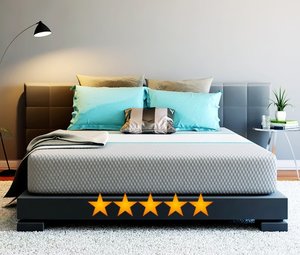
A uniquely designed foam hybrid mattress that offers a moderate degree of plushness and support. Copper infused foam provides antibacterial qualities. 10” finished height, 100 night trial, 20 year warranty, $950 for a queen. Free shipping. CLICK HERE FOR THE BEST DEAL and to check them out. Very forward thinking mattress system. Marc’s comments: Their secret: one of few companies online that uses their own factories, not pimping out their manufacturing to 3rd party fabricators. The benefit: Better ingredients since they own the whole enchilada and don’t have to sacrifice quality to pay the middleman.
Jul 24, 2019

Two models, delivering best in class pressure relief, precision spinal alignment, with a sumptuous, nest-like feel. Uses top of the line luxury components and textiles, safer, low VOC and formaldehyde free Certi-Pur foam. A side and back sleeper’s fantasy mattress. Get $300 off + w FREE pillows, free shipping, a great trial period, with unbeatable warranty. Our #1 Choice For Overall Best Mattress. 4.9 Rating out of 5, from a total of 6,572 Online Reviews.
Mar 20, 2019

A wonderful hybrid mattress without all of the middleman costs. $598 for a king size bed. Individually wrapped pocketed coils, and a unique hybrid foam layer system above providing bouncy yet pressure relieving and a cool to the touch knit outer cover. We like the quality of the gel foam used in this Texas made brand. 96% of customers keep this mattress, and with a solid 10 year warranty, you can’t go wrong. Great for side sleepers and nest sleepers. Click here to get the deal. A third of the price of identical “BigMattressInc” beds.
Apr 20, 2019

Habitat Furnishings offers the best digital sleep number style airbed on the market. For half the price of the big name brand, you’ll get a mattress that lets you control an infinite range of soft to firm settings. The bed is made with both natural latex and premium memory foam, and includes a quilted bamboo comforter top built right in! LED remote controls with memory setting. Sale offers $1200 off everyday prices. 90 Day Free Trial, solid warranty, made in USA!
Jun 16, 2020

Hybrid mattress featuring EMF and 5G radiation shielding system. FDA backed technology using static and charge removal surface. Detox, remove free radicals, and get restorative and recharged rest. An “information age” bed. Order the Anti-Aging Bed® or cover only for existing mattress. Click here to visit and to order.
Apr 6, 2020

Looking for great support, especially at hips and shoulders? Our team loves this unique coil and foam hybrid. Gel memory foam on top, a pocketed coil system below with zoned support for torso and hips. A unique feature: a foam edge which provides perimeter support for sitting and increases usable space on the mattress. Queen size $999, 120 Night Trial. A+ marks. Check out their full product line up here.
Jul 17, 2019
Other Ways To Reduce Wrinkles As You Sleep
We’ve all said it, even guys. “I need my beauty sleep”, as you stand in your bedroom doorway, exhausted, face drawn, and you eagerly crawl like a sloth into your bed. While we need deep sleep to slow down aging and help heal skin and muscles and connective tissues, there are ways to reduce the mechanical problems in bed that can produce those overnight wrinkles, also. Many people ask, does sleeping itself cause wrinkles?
Yes, absolutely, according to dermatologists like Debra Jaliman, MD. She suggests that sleeping so that your face is into contact with cotton pillowcases while you are on your side or belly can create deep sleep lines on your cheeks and forehead.
Repeated pressure, like sleeping on your side with your face mashed against a pillow can facilitate skin volume reduction and reduce the amount of collagen in these soft tissues, which also reduces their elasticity. Even when you are not sleeping, repetitive facial movements like frowning and other muscle activity can create “skin memory” and create deep wrinkles and permanent frown lines.
Here’s a primer on how you can reduce wrinkles while you are sleeping and promote rejuvenation and rehydration of facial tissues.
Try to Sleep on your back as much as possible
Though it might be your favorite position since early childhood, sleeping on your belly or side applies constant pressure to your face. As time goes on, this compression will produce sleep lines which become part of your facial map. Fortunately you can revers much of this damage simply by lying on your back.
You may find it uncomfortable at first, but we advise using a low profile pillow under your head, and try tucking other pillows along side, which will fix your body in position, so that during the night, you’re not likely to tilt over onto your side or flip to belly position.
Sleeping on your back allows your face to remain uncompressed and rehydrate, allowing fresh blood and water to cascade into your face, healing the tissues. It might take some practice, but virtually everyone can ultimately master the technique. In fact, once you adapt to back sleeping, you’ll find other positions rather uncomfortable. It’s also healthy for your back and promotes proper spine alignment.
absolutely Not a back-sleeper? a specialized pillow might help
Our CEO and senior editor, Marc Anderson, has personally designed numerous pillows and states that “choosing the correct pillow is a serious consideration” that affects your overall sleep hygiene protocol, and that deep, excessively soft pillows are a bad choice. “If you want to learn how to sleep on your back, a low profile contour pillow is your best option”.
He recommends a memory foam or latex pillow that supports your neck, keeps your airway open, and cradles your head but still allows you to turn it slightly. Marc highly recommends the Discover Night Pillow, a highly advanced memory foam material that is wrapped using a Spandex material that breathes and feels silky, almost slippery, which reduces compression and keeps your face from “sticking” to your pillow. “The Discover Night pillow can keep fine lines from forming as well, he stated.
try a pillow case that is made from softer materials
If you struggle with sleeping on your back, you can eliminate wrinkles caused by cotton pillow cases by trying silk or satin. Your skin slides very easily on silk or satin and there is less traction which reduces the “crunch” factor that mashes and folds your skin, forming wrinkles. Marc recommends Mulberry Silk, which is the finest silk in the world, produced by a particular species of caterpillar that fees exclusively on Mulberry leaves in certain parts of China.
Mulberry Silk pillow cases can be machine washed, too, and are durable and will last a long time, remaining velvety smooth and silky soft.
Get a full night’s rest
It might sound incredibly obvious, but getting a solid 7-8 hours of sleep to rejuvenate soft tissues reduce facial wrinkling is essential.